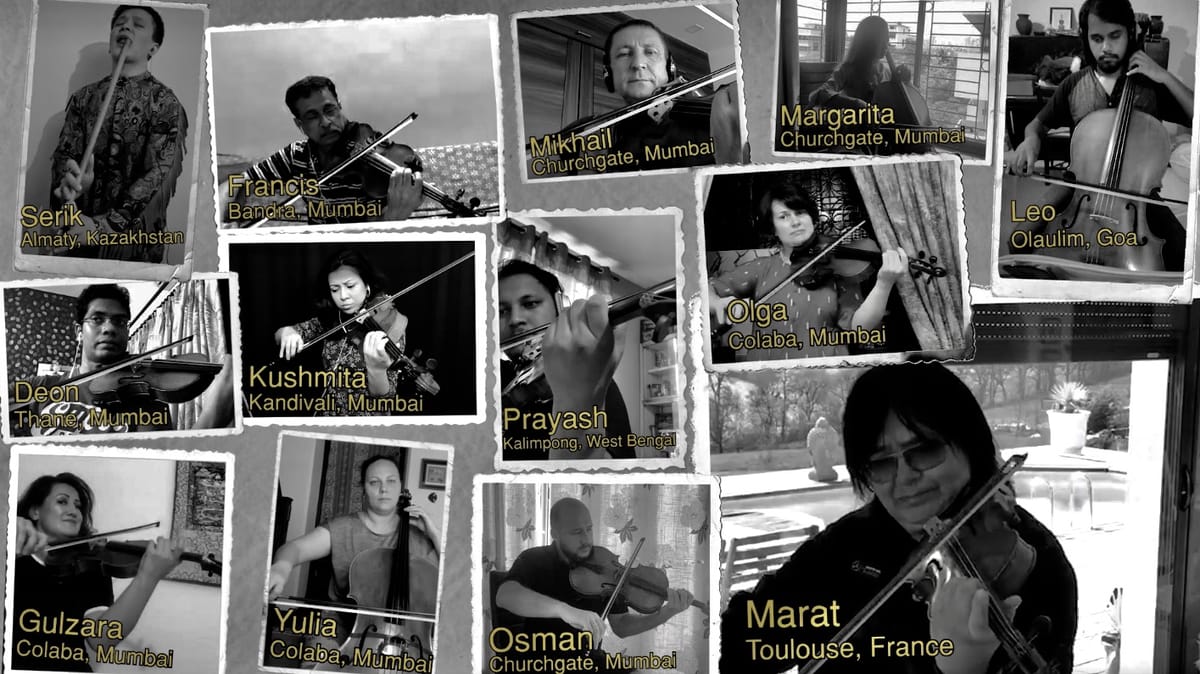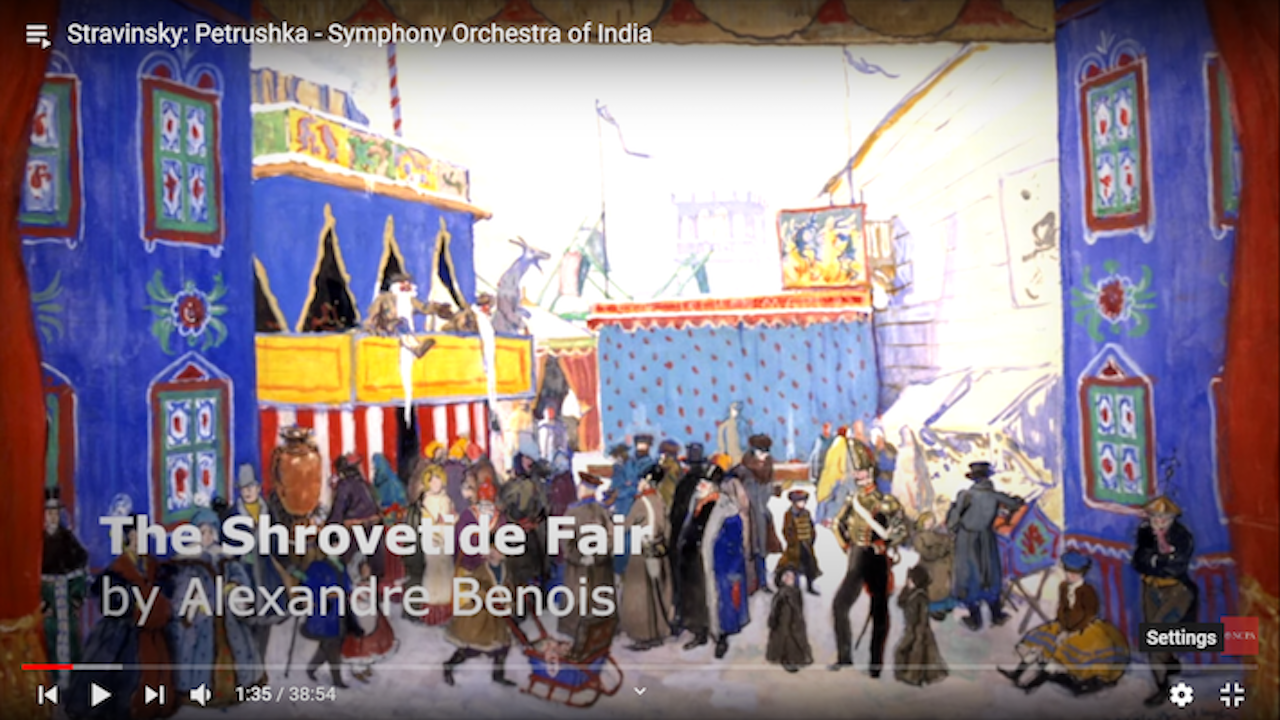The Best of Both Worlds

The pause on live performances at the NCPA has been a period of brainstorming that has resulted in innovative online offerings, and the creation of a strategy for times beyond the lockdown that celebrates the live medium and widens its reach digitally. By Snigdha Hasan
The beginning of March at the NCPA was about the dynamism that flows through the corridors of a cultural organisation with a packed calendar. The SOI Spring 2020 Season had just been successfully wrapped up and patrons were waiting for Sharmila Tagore’s poetic tribute to the season of love. Iconic choreographies were being rehearsed for the NCPA Mudra Dance Festival, programming was underway for the first India World Choral Festival, International Jazz Day was only a month away and the NCPA production, A Small Family Business, was all set for its premiere. But by mid-March, the vigour had made way for worry. A virus had hit the world, and it did not seem to be in the mood to make an exit anytime soon. Three months later, we are still pandering to its whims and fancies.
Even as attempts are being made to restore normalcy in critical facets of life, it will be a while until the NCPA, like other centres the world over, believes it is safe enough to open its doors again, and until even the most ardent lovers of the arts feel comfortable enough to gather to watch a live performance. In the meantime, everything is being done to bridge the distance to Nariman Point, albeit virtually.
Digital offerings
The NCPA was among the first institutions in the city to close its offices and theatres even before the lockdown was imposed, but work has not stopped for even a day. Matters of immediate concern and those of long-term planning are taken up by senior management and genre heads during daily online meetings. While initially the priority was to cancel/postpone shows, iron out the ensuing logistics, inform the audience of the same and initiate ticket refund processes online, the focus then shifted to exploring the digital medium to ensure culture reached people in these trying times in the safety of their homes. The NCPA@home YouTube broadcast series began on 3rd April and continues to present a wealth of performances from across genres of Western and Indian music and dance, chosen from the NCPA’s archival library.
For an organisation whose raison d’être is the propagation of the finest quality of arts through live performances, this has not been an easy feat because the demands of the digital medium are entirely different. “Our recordings have been done for the purpose of documentation. The recordists involved lend technical expertise to the endeavour, but to make content more presentable calls for artistic inputs. Directors of photography and sound directors are better placed to decide the camera position, and take a call on the right moments for a close-up or zooming in or out,” explains Nayan Kale, General Manager, Technical, NCPA.

This relook at the existing recordings has proved to be helpful for the future. “We are now revisiting the material we already have to add a flavour of the pre-show and interval experience. There is some re-editing of the original footage where possible, though this is of necessity a painstaking process. The primary challenge is to create consistency across the finished broadcasts, and we are now working to ensure the recordings remain individual but are of consistent style, colour, brightness and quality,” says Richard Nowell, Consultant, Technical, NCPA. A fine example of this revisit was the introductory video for the recent YouTube broadcast of the Symphony Orchestra of India’s (SOI’s) 2019 performance of Petrushka, under the baton of Alexander Lazarev. The insightful introduction by Mikel Toms, Resident Conductor, SOI, was recorded and rendered in the U.K. and added seamlessly to the concert recording for better appreciation of the music in the context of the time it was composed in and the cultural setting of the famous ballet itself.
In keeping with social-distancing norms, the NCPA is also exploring the possibility of a format where artistes come together in the auditorium to perform, without the audience, so it can be uploaded online or aired digitally as a live show. And for this, the aesthetic considerations and technical requirements will vary. Nowell points out,
“If we have a live audience as we record, there are two primary concerns: the first is to minimise the disturbance to the patrons caused by cameras and operators, the second is to try to capture some of the atmosphere and audience experience. Without an audience we have a great deal more flexibility in terms of camera positions and actions and the emphasis shifts to ensuring the most is made of the freedom to capture close-up detail and to shoot details from angles an audience may not normally see.”
Innovation in online offerings from the NCPA is an ongoing process. While virtual lessons for the students of the SOI Music Academy are on in full swing, famous music pieces by international composers have been recorded by members of the SOI and the students from their respective locations the world over, with Music Director Marat Bisengaliev at the helm. Overcoming the issues of time difference, internet connectivity and ambient noise aside, recording individual instruments, stitching them together and streaming them online in a lossless format has been a new experience.
On International Dance Day on 29th April, Kathak exponent Aditi Mangaldas conducted a masterclass through the Facebook Live feature while a three-day celebration of International Jazz Day, an online initiative on the NCPA’s Facebook page with the hashtag NCPACelebratesJazzSeries, saw 75 musicians from the world over perform from their homes.

Live online interaction with artistes at the time of YouTube broadcasts has been facilitated wherever possible. Viewers were in for a surprise when during the streaming of Song of the Himalayas, curated by the Indian Music genre, composer Shantanu Moitra, vocalist, Buddhist nun and UNICEF Goodwill ambassador Ani Choying Drolma, vocalist Kaushiki Chakraborty, sitarist Purbayan Chatterjee and flautist Ashwin Shrinivasan were virtually present using the Live Chat option to answer questions and explain musical intricacies.
Home of live performances
Digital streaming has undoubtedly widened the reach of the NCPA and taken its carefully curated programmes to viewers around the world. “NCPA senior management is taking great care to understand the needs of our existing audience and the desires of our possible future audience. Establishing a sustainable, high-quality online offering is critical to our future and our strength lies in the depth and breadth of our different genres. At the same time, the management is well aware that an online presence is important but in the end, we want people to come to our campus and experience great artistic works together. The live experience and sense of sharing that experience remains crucial,” says Nowell.
When the theatres reopen, capturing a live event without intruding on the audience experience will call for a protocol, which is being worked on. “It is important that high-quality cameras and lighting is used to record productions, but one of the key priorities is to ensure they are as compact as possible and located in positions that provide both the best camera angles and least audience disruption…The refurbishment of our video editing suite has moved up the priority list as post-production editing is time-consuming and should be brought in-house. We are also investigating having our own dedicated media servers and possibly even our own online platform to ensure our content is available to all at all times. Such an investment is huge and though time is of the essence during the current pandemic, the management is well aware it is easy to make mistakes by rushing to make a decision on such things,” Nowell elaborates, while underlining what is of essence when it comes to carving the way forward, “The NCPA is about excellent work performed live and experienced together. The one thing we are keen to maintain is the absolute focus on quality. As always, technical must and will follow the art wherever it leads.”
This piece was originally published by the National Centre for the Performing Arts, Mumbai, in the June 2020 issue of ON Stage – their monthly arts magazine.





